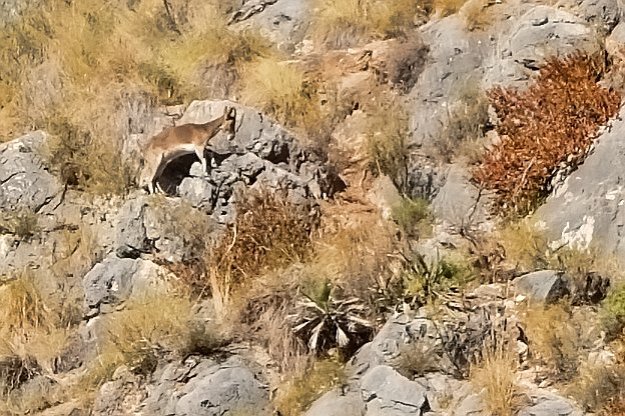This has been our last day with Walk Andalucia. We booked a late return flight from Málaga in order to gain another day in Spain, without really planning in advance how to spend it. In the end, we decided to join our group leaving from Torrox to the airport early in the morning, and try to discover the city of Málaga.
Vicky and Paul dropped us in Málaga at the train station and came with us inside the station to show us where to drop the luggage. Three euros and you are free to roam for an entire day luggage free – what a wonderful invention.
 We said our good byes to our wonderful guides Vicky and Paul, and minutes later here we are, walking towards the city centre.
We said our good byes to our wonderful guides Vicky and Paul, and minutes later here we are, walking towards the city centre.

It took us about 20 minutes to reach the centre, brisk walk, as we were quite hungry by that time.
The majestic Málaga Cathedral, and us walking around it, to try to decide on a place to eat a bit of breakfast/ early lunch.


And finally stopped at a small cafe on San Agustin street. 
Vicky empowered us with map of Malaga’s attractions, so decided to try a few museums.
The most obvious choice was the Picasso museum, however by the time we finished lunch, the queue was already miles long – so we needed a change of plan.
It’s Spain, so we started with the Flamenco Museum. Very nice little place and certainly not on the beaten track (although very central).
By the time we finished the tour, the rain started. Time to hide away so we stop for a coffee and a cake at the turkish cafe, on the same San Agustin street, behind the Cathedral. It’s here we met two Scottish ladies, otherwise friends, that explained us, in turn and quite passionately, the advantage of the Yes and the No vote for Scottish independence.
Next we choose the African Arts Museum – minutes away fro the Cathedral.
This statue is thousands of years old and it’s one of the oldest artefacts in the museum.
I almost forgot, but in the way to the taxi, we have discovered the El Pimpi restaurant – too late for us to stop, but definitely bookmarked for next time, if there will ever be a next time in Málaga.
This is El Teatro Romano – our last stop for a couple of minutes.
The history bit
El Teatro Romano is the oldest monument in Málaga City; it is situated in the cultural heart of Málaga city, at the foot of the famous Alcazaba fortress. The theatre was built in the first century BC, under Emperor Augustus, and was used until the third century AD. Subsequently it was left to ruin for centuries, until the Moors settled in Andalucía. In 756-780AD the amphitheatre was used as a quarry by the Moorish settlers , to excavate the stone used to build the Alcazaba fortress – you can see some Roman columns and capitals in the fortress.
Next for us – taxi, train to airport and back home in England.
We had a great time in Torrox, because the place is great, the food is very good, the walks uncovered magical places, but mostly because we have met and spent the week with a very special bunch of people.


























 S
S








































































